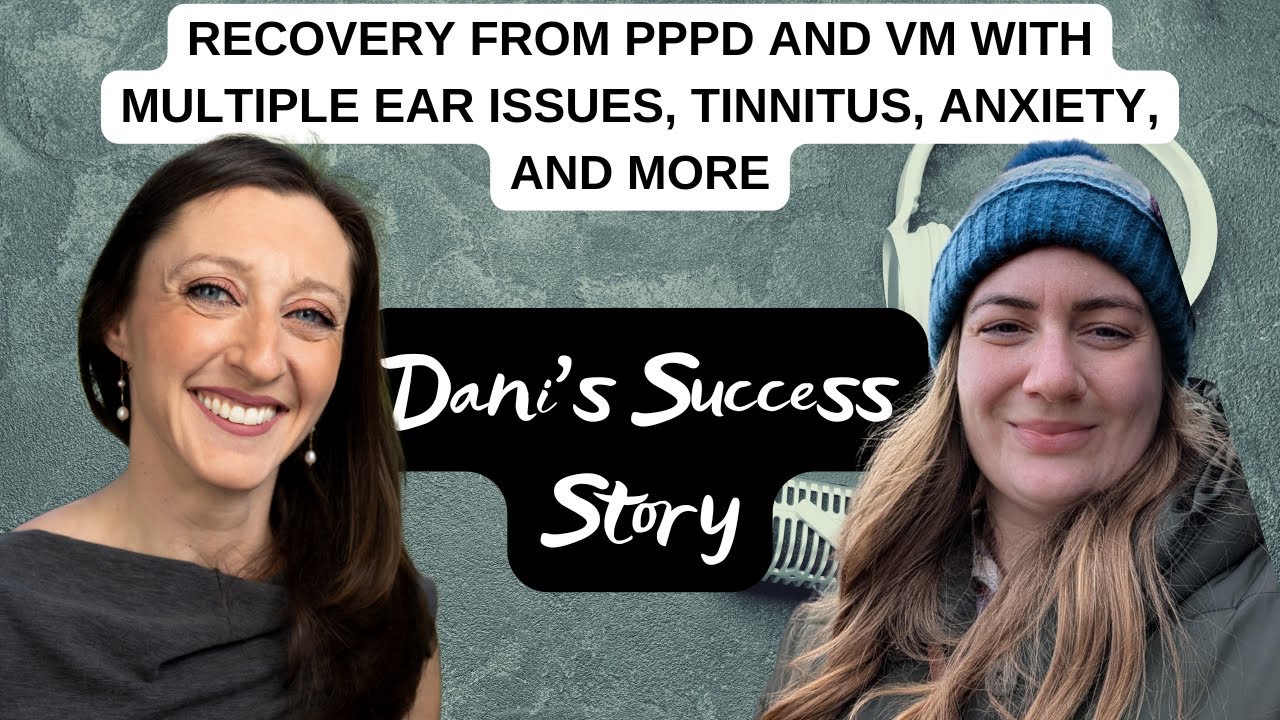Dani’s success story illustrates that conditions like PPPD, vestibular migraines, and Eustachian tube dysfunction are treatable through understanding emotional patterns and addressing stressors. With gentle physical and emotional work, acceptance, and support, she gradually recovered from severe symptoms, highlighting the importance of holistic healing and mindset. Her journey offers hope to others facing similar challenges.
Dr. Yonit Arthur shares a success story of Dani, who recovered from PPPD (Persistent Postural-Perceptual Dizziness), vestibular migraines, and Eustachian tube dysfunction. She emphasizes that these conditions are often wrongly considered incurable and chronic because they are not treated properly. Dani’s recovery illustrates that understanding the deeper stressors and addressing emotional patterns, beyond just reacting less fearfully to symptoms, is crucial for lasting healing. Dr. Arthur highlights that neural circuit dizziness is driven by central sensitization and stressors related to how one relates to themselves and their environment.
Dani recounts her gradual onset of symptoms following a cold and ear blockage during a flight, which led to prolonged dizziness, ear pressure, brain fog, tinnitus, sensitivity to sound and light, panic attacks, and suicidal thoughts. Her symptoms worsened over time, severely impairing her ability to function, work, or even perform basic tasks like brushing her teeth. Medical investigations—MRIs and CT scans—initially found no abnormalities, leading to frustration. She sought help from a vestibular therapist after finding her own resources online, which proved pivotal in her recovery journey.
The story details Dani’s emotional and physical struggles at her worst, including feeling unwell, overwhelmed, and disconnected from her previous life. The vestibular therapist diagnosed her with neuritis leading to PPPD and began a gradual, gentle program combining physical exercises and emotional work. Dani describes her progress, initially cautious but ultimately gaining confidence by gradually re-engaging in activities like dinner outings, walks, and cooking. She emphasizes that acceptance of her current sensations, along with mindfulness and somatic tracking, were key tools that supported her healing process.
Dani’s recovery involved deep emotional work, particularly grief processing and addressing longstanding patterns of control, perfectionism, and unexpressed anger. She shifted from avoiding sensations to welcoming them as part of her brain’s learning process. Her journey was further supported by new therapeutic approaches like Internal Family Systems (IFS), which helped her process past losses and emotional trauma. As her understanding deepened and emotional healing progressed, her symptoms diminished markedly, and she described her overall mental and physical health as much improved.
Finally, Dani offers advice to others facing similar struggles: seek strong support from loved ones and advocates, practice patience and consistency, and recognize that recovery is a gradual process. She reiterates that symptoms may dip or fluctuate but are not signs of failure or new disease. Acceptance, emotional work, and understanding that symptoms are the brain’s way of healing are critical. Her story demonstrates that recovery is entirely possible with the right mindset, emotional work, and professional support, inspiring hope for those still in the thick of struggling with neural circuit dizziness.
@DizzyBot what was said about eustachian tube in the video?
Dr. Yonit Arthur mentioned that Dani’s experience with Eustachian tube dysfunction was part of her overall recovery journey. Dani described her symptoms of ear pressure and popping, which are common in Eustachian tube dysfunction. She initially tried various treatments, including seeing specialists and trying different therapies, but her symptoms persisted and worsened, leading to significant distress and impairment.
Her story highlights that Eustachian tube dysfunction, like other symptoms in neural circuit dizziness, can be influenced by brain processing errors rather than just mechanical issues. Dani’s recovery involved understanding that her symptoms were part of her brain’s rewiring process, and she gradually learned to accept and manage them through emotional work, somatic tracking, and gentle physical activity. This holistic approach contributed to her overall improvement, including relief from ear-related symptoms.
In summary, Dani’s success story underscores that Eustachian tube dysfunction symptoms can be part of neural circuit dizziness and are treatable when approached with a combination of emotional, physical, and mindset strategies.
Thanks for sharing. It gives us a bit of hope ![]()
There’s plenty of hope @scotty it’s just a pain the posterior meantime before you emerge from the tunnel! ![]()
